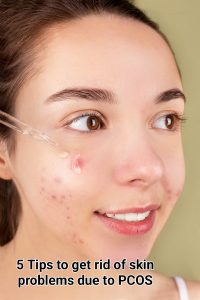
What Is Skin Pigmentation?
Skin pigmentation refers to the colouration of the skin, which is primarily determined by the presence and distribution of a pigment called melanin. Melanin is produced by specialized skin cells called melanocytes, which are found in the lower layer of the skin (epidermis) known as the basal layer.
The primary function of melanin is to protect the skin from the harmful effects of ultraviolet (UV) radiation from the sun. When the skin is exposed to sunlight, melanocytes produce more melanin, leading to a darker colouration of the skin. This increased melanin production acts as a natural defence mechanism, absorbing and dissipating the UV radiation to prevent damage to the DNA in skin cells.
What Is Melanin?
Different individuals have different amounts and types of melanin, which gives rise to the wide range of skin colours observed in human populations. There are three main types of melanin:
- Eumelanin: This type of melanin is responsible for brown and black pigments in the skin, hair, and eyes. It provides protection against the harmful effects of UV radiation by absorbing and scattering it.
- Pheomelanin: Pheomelanin is responsible for red and yellow pigments in the skin, hair, and eyes. It is less effective at providing protection against UV radiation compared to eumelanin.
- Neuromelanin: This type of melanin is found in certain areas of the brain and is not related to skin pigmentation.
The distribution and amount of melanin in the skin are influenced by a combination of genetic factors, such as ethnicity and family history, as well as environmental factors like sun exposure and hormonal changes. Variations in melanin production and distribution can lead to differences in skin color and pigmentation patterns among individuals and populations.
What Are The 5 Changes in Skin Pigmentation?
Skin pigmentation can vary due to a variety of factors, including genetics, environmental influences, and underlying medical conditions. Here are five changes in skin pigmentation that can occur:
-
Hyperpigmentation: This refers to areas of the skin becoming darker than the surrounding skin due to an increase in melanin production. Hyperpigmentation can be caused by sun exposure, hormonal changes (such as during pregnancy), certain medications, and skin inflammation.
-
Hypopigmentation: Hypopigmentation is the opposite of hyperpigmentation. It occurs when areas of the skin become lighter than the surrounding skin due to a decrease in melanin production. Conditions like vitiligo, which results in the loss of melanin-producing cells, can cause hypopigmentation.
-
Freckles: Freckles are small, concentrated areas of increased pigmentation that are usually triggered by exposure to sunlight. They are more common in individuals with fair skin and may become more pronounced after sun exposure.
-
Melasma: Melasma is a common skin condition characterized by patches of dark, brownish pigmentation on the face. It is often associated with hormonal changes, such as those that occur during pregnancy or while taking birth control pills, as well as sun exposure.
-
Age Spots (Lentigines): Also known as liver spots or sun spots, age spots are flat, tan, brown, or black spots that typically appear on areas of the skin that have been exposed to the sun. They are a result of years of sun exposure and are more common in older individuals.

Why Does Skin Pigmentation Occur?
Skin pigmentation occurs primarily as a result of the presence and distribution of a pigment called melanin. Melanin is produced by specialized skin cells called melanocytes, which are located in the basal layer of the epidermis (the outermost layer of the skin). The main factors that contribute to the occurrence of skin pigmentation include:
-
Sun Exposure: Ultraviolet (UV) radiation from the sun is a major factor that stimulates melanin production. When the skin is exposed to sunlight, melanocytes increase their production of melanin as a protective response. The melanin absorbs and scatters UV radiation, preventing it from penetrating deeper layers of the skin and damaging DNA within skin cells. This is why people tend to tan when exposed to the sun for extended periods.
-
Genetics: Genetic factors play a significant role in determining an individual’s baseline skin color and potential for pigmentation changes. People with different ancestral backgrounds have varying amounts and types of melanin, leading to the wide range of skin colors observed in different populations.
-
Hormonal Changes: Hormonal fluctuations can influence melanin production. For example, during pregnancy, some women may experience increased pigmentation due to hormonal changes, leading to conditions like melasma (dark patches on the skin). Certain medical conditions that involve hormonal imbalances can also affect pigmentation.
-
Inflammatory Processes: Inflammation caused by skin injuries, infections, or other dermatological conditions can trigger an increase in melanin production. This can result in hyperpigmentation in the affected areas as part of the skin’s healing response.
-
Medical Conditions: Certain medical conditions can lead to changes in pigmentation. For instance, vitiligo is a condition in which melanocytes are destroyed, resulting in patches of depigmented (white) skin. Other conditions, such as post-inflammatory hyperpigmentation and certain types of skin cancer, can also affect skin pigmentation.
-
Age: Over time, the cumulative effects of sun exposure and the natural aging process can lead to changes in skin pigmentation. Age spots (lentigines) and other pigmented lesions are often seen in older individuals.
How Does PCOS Impact Skin Pigmentation?
Polycystic ovary syndrome (PCOS) is a hormonal disorder that can have various effects on the body, including the skin. While PCOS itself may not directly cause changes in skin pigmentation, it can lead to hormonal imbalances that influence skin health and appearance. Here are some ways in which PCOS can impact skin pigmentation:
-
Acne and Hyperpigmentation: Hormonal fluctuations, particularly elevated levels of androgens (male hormones) like testosterone, are common in PCOS. These hormonal imbalances can lead to increased sebum (oil) production in the skin and contribute to the development of acne. When acne lesions heal, they can sometimes leave behind areas of hyperpigmentation, which are darker spots on the skin. These spots can be more pronounced in individuals with darker skin tones.
-
Hirsutism and Hyperpigmentation: Excess androgens in PCOS can also lead to hirsutism, which is the growth of excessive hair in areas where men typically grow hair (such as the face, chest, and back). Frequent hair removal methods like waxing or threading can sometimes lead to skin irritation and inflammation, which may result in post-inflammatory hyperpigmentation (dark spots) in those areas.
-
Acanthosis Nigricans: Acanthosis nigricans is a condition characterized by dark, thickened patches of skin, often appearing in skin folds and creases. It’s associated with insulin resistance, which is common in PCOS. The exact mechanisms linking insulin resistance to acanthosis nigricans are not fully understood, but it’s believed that elevated insulin levels can stimulate the growth of skin cells and lead to increased pigmentation.
-
Melasma: While not exclusive to PCOS, some women with the condition may experience melasma, which is characterized by brown or grayish patches on the skin, typically on the face. Hormonal fluctuations, including those associated with PCOS, can trigger or worsen melasma.
- Skin Tags: Skin tags are small, benign growths that can appear on the skin, often in areas of friction like the neck, underarms, and groin. PCOS is associated with an increased risk of developing skin tags, although the exact connection is not completely understood.

The ten modern lifestyle root causes for hormonal imbalance related to PCOS that may on some level lead to skin pigmentation are:
- Food Related Causes– Inflammation, toxicity, acidity, excess male hormones, insulin resistance.
- Exercise-Related Causes: Sedentary lifestyle, lack of muscle strength, excess ovarian fat.
- Sleep-Related Causes: Poor sleep quality (Lack of Deep Sleep).
- Stress Related Causes: Chronic Stress. Addressing these triggers through an integrated approach can naturally restore hormonal balance.
How can the Five Pillars Integrated Lifestyle Approach Help You to Have Hormonal Balance and Help With Skin Pigmentation?
- Eat Right: Embrace living, water-rich, whole, plant-based foods that nurture our genetic potential. By opting for local and seasonal choices, we honor nature’s wisdom. Eliminating packaged and processed foods liberates us from epigenetic imprints, elevating our hormonal health.
- Move More: Embark on a journey of holistic lifestyle changes, where staying active transcends mere exercise. Embracing constant movement throughout the day optimizes epigenetic expression, igniting hormonal balance. Engage in pleasurable physical activities, dance, or even mindful walks to unlock the power of epigenetic triggers.
- Breathe Aware: As we deepen our understanding of Pranayama, the science of breath, we access a profound gateway to support gland function and harmonize hormones. Harnessing the breath’s epigenetic influence, we transcend the ordinary and elevate our hormonal well-being.
- Sleep Better: Unlock the secrets of deep sleep, a transformative practice for healing and regeneration. With the art of Yog Nidra, we embrace epigenetic potential, unearthing hormonal harmony in the realm of dreams. Rejuvenate your entire being through this exquisite dance with the epigenetic clock.
- Mind Free: Journey into the realm of emotions, thoughts, and stress resilience, where journaling, gratitude, and emotional practices become our guiding compass. Embracing epigenetic intelligence, we shift our narrative from stress to serenity, empowering our hormonal landscape.





No comment yet, add your voice below!